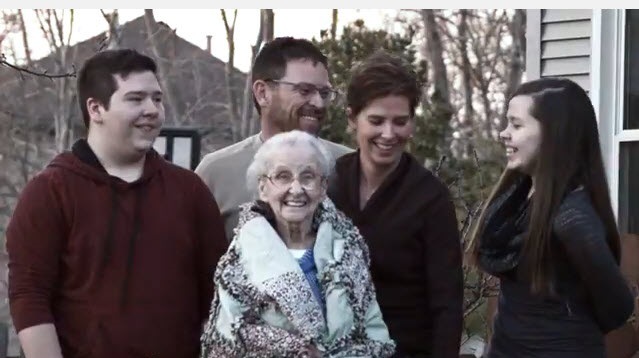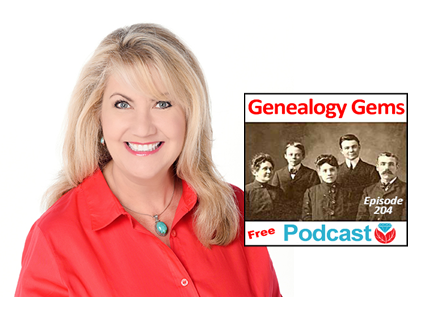by | Apr 29, 2014 | 01 What's New, Beginner, Family History Podcast, Immigration
 Family History: Genealogy Made Easy
Family History: Genealogy Made Easy
with Lisa Louise Cooke
Republished April 29, 2014
[display_podcast]
Download the Show Notes for this Episode
Welcome to this step-by-step series for beginning genealogists—and more experienced ones who want to brush up or learn something new. I first ran this series in 2008-09. So many people have asked about it, I’m bringing it back in weekly segments.
Episode 29: Immigration and Naturalization Records for Family History, Part 1
In this podcast episode, one of my favorite experts talks about one of my favorite topics: immigration and naturalization records. Stephen Danko, PhD is a genealogy lecturer and a very popular blogger. In this episode he’s helping U.S. genealogists cross the pond through the use of immigration and naturalization records. He’ll talk to us about the challenges we’ll face in locating these records—and some documents you may not even know existed: certificates of arrival.
In the next episode, we’ll continue our conversation with a discussion of Departure Passenger Lists. Departure information from European ports is often available on microfilm at the Family History Library, on Ancestry.com or other websites. Some of the passenger steamship lines themselves kept departure lists, like the White Star Line or the Red Star Line, and these are on microfilm.
Here are my favorite tips from the episode:
Once you find an ancestral hometown, use Stephen Morse’s advanced search tools (see below) to look for others who arrived from the same place. This can help you identify other relatives, friends and others who part of a group or chain migration.
Usually we start with the most recent records and work backward. But when we look for immigration and naturalization records, look FIRST for immigration papers. THEN look for naturalization papers they may have filed later. You know they arrived—but not every immigrant naturalized, and their naturalization papers may have been filed in multiple places and may not be indexed.
Beginning in 1926, applicants for naturalization who arrived in 1906 or later had to be issued a certificate of arrival. These certificates were issued after their names were confirmed by the government on the original passenger lists. Between 1926 and 1943, information about certificates of arrival was noted on the original passenger lists.
The certificate of arrival information helps you in two ways:
- The date tells you about when they applied for naturalization
- The first part of the certificate number is the naturalization district (Northeast, Midwest, West coast, etc), to help you narrow down where to look.
Anything that helps you narrow down a search for naturalization records helps!
Updates and Links
About 70 million immigration and naturalization records have been indexed in recent years through an enormous community indexing project led by FamilySearch. Check out their site (below) to see what records are searchable now.
Ancestry.com
Ellis Island.org
FamilySearch.org Immigration and Naturalization Online Resources
One-Step Webpages by Stephen P. Morse (Ellis Island Search Tool)
Timeline of U.S. Immigration Laws
by | Apr 28, 2014 | 01 What's New, Volunteer
 Each year the Federation of Genealogical Societies or FGS awards individuals and organizations who make significant contributions to family history. Between now and Jun 15, 2014, they are accepting nominations. Award categories and a link to the submission form can be found at www.fgs.org/awards/awards.
Each year the Federation of Genealogical Societies or FGS awards individuals and organizations who make significant contributions to family history. Between now and Jun 15, 2014, they are accepting nominations. Award categories and a link to the submission form can be found at www.fgs.org/awards/awards.
FGS awards are given to societies and members of societies for outstanding and notable service to the genealogical community. Winners’ activities, products and efforts are highlighted. FGS also buy medicine online kuwait provides examples and ideas on how others can accomplish similar goals.
“The awards program helps gain public recognition of the valuable work of dedicated volunteers,” says Paula Stuart-Warren, FGS Director and Awards Committee Chair. “We each know of individuals and groups that deserve to be honored by their peers. Let FGS know about them and we will share the knowledge of their efforts with genealogists across the globe.”
by Lisa Cooke | Apr 23, 2014 | 01 What's New, Humor, Inspiration, Social Media, Video, YouTube
Think social media sites like Instagram and Twitter can’t really be used for family history in a meaningful way? Grandma Betty will change your mind!
Jeffersonville, Indiana’s Grandma Betty has become an Instagram  sensation thanks in big part to her Grandson. Betty is fighting cancer, and her family wants to ensure her memory is preserved – so they turned to social media.
sensation thanks in big part to her Grandson. Betty is fighting cancer, and her family wants to ensure her memory is preserved – so they turned to social media.
I love this social media merriment on so many levels!
It celebrates:
- love of family
- family history
- battling cancer head on
- and the coming together of very different generations
If you want a dose of super awesomeness and inspiration, click the video below to learn more about Grandma Betty:
Then visit Grandma Betty’s delicious Instagram site here.
Now it’s your turn: How are you using social media to further family history?
Inspire others by sharing this video and your story on Facebook (or any other social media site) using the buttons at the top of this post. Sharing through social media is one simple way you can make your voice heard – just like Grandma Betty.
Learn how to discover and preserve your family history using technology
Listen to the free Genealogy Gems Podcast available in iTunes. Or get the app:
iPad App: Click here for iPad app
iPhone App: Click here for iPhone app
Android App: Click here for the Android App
You will get Bonus content, streaming and all my Genealogy Gems in one convenient app.
by Lisa Cooke | Apr 22, 2014 | 01 What's New, Craft & Displays, Inspiration
When my kids were little I would pack away some of their mountain of toys. Then every so often I would bring them back in to “play circulation” and pack up another batch. To the kids, it was like getting brand new toys!
Our recent move has been sort of like that. As I unpacked boxes of bubble-wrapped baubles it was like finding new family heirlooms all over again.
One example is quite small: a single vintage clip-on earring.
It belonged to my beloved Grandma Burkett. Even though it had lost its match long ago, I couldn’t bear to part with it. As I unwrapped the seemingly useless single earring I was immediately struck with how I could use it. I clipped it in my hair at the end of my french braid!
Later that day I went shopping with my daughter, and several people stopped to compliment the jewel and inquire about it. When I explained it originally belonged to my Grandmother, faces lit up and family history conversations started to flow. All from one little thing…
Your challenge this week: Look at what you have with fresh eyes, and share your family history with the world in little ways!
– Lisa

by Lisa Cooke | Apr 22, 2014 | 01 What's New, Beginner, Family History Podcast, Newspaper

Listen to the Family History: Genealogy Made Easy podcast by Lisa Louise Cooke. It’s a great series for learning the research ropes and well as refreshing your skills.
Family History: Genealogy Made Easy
with Lisa Louise Cooke
Republished April 22, 2014
[display_podcast]
Download the Show Notes for this Episode
Welcome to this step-by-step series for beginning genealogists—and more experienced ones who want to brush up or learn something new. I first ran this series in 2008-09. So many people have asked about it, I’m bringing it back in weekly segments.
Episode 28: Find Your Family History in Newspapers, Part 2
Newspapers offer such a unique perspective on history in general, and our ancestors specifically. In Part 1 of this 2-part series, we talked about finding historical newspapers. In this episode, Jane Knowles Lindsey at the California Genealogical Society shares inspiring stories about the kinds of family items she’s found in newspapers. She offers a dozen more fantastic tips on researching old newspapers.
Jane mentions these family history finds from old newspapers:
- photographs (engagements, weddings, obituaries, etc)
- family visits from out of town
- clues on immigrant arrivals
- who’s staying at local hotels
- news on relatives who were missionaries overseas
- crimes involving relatives as victims, perpetrators, investigators, etc.
- profiles of jurors
- family reunions
- probate items and transcriptions from court cases, like divorces
Here are 12 more tips for researching newspapers and organizing your discoveries:
- If you print out newspaper content found online, make sure you note where you found it. Source citation information may not be included in what you print.
- Look for probate and “bigger” news items in newspapers that have wider coverage than the town: a neighboring larger city or a county-wide paper. Also look at the map to see whether the nearest big paper is out-of-county or even out of state.
- Social calendar items (family visits, etc) were most popular up to the 1960s and 1970s. Newspapers today don’t look at local and personal news items.
- Sometimes death notices for more prominent people are accompanied by a much larger article about them that runs within a week before or after the obituary.
- There may have been both a morning and afternoon newspaper in some areas. Learn what papers were in town.
- Transcribe short newspaper articles into your family history software. Transcription helps you catch details you may otherwise miss, if you’re not reading very carefully.
- Nowadays with OCR and scanning, you can actually keep a digital copy of the article itself.
- Look for ethnic newspapers in the advanced search at the U.S. Newspaper Directory at Chronicling America.
- Any mention in a newspaper can point you to other records: court files, immigration and naturalization papers, military documents, cemetery records and more.
- Google! See the link below for the updated Google News resource (for historical newspapers).
- Newspapers can act as a substitute or supplement for records that have been lost in courthouse fires and floods or other records.
- Like today, not everything we read in the newspaper is true!
Updates and Links
- Some of the digital newspaper collections mentioned in the episode are available by library subscription, like The Early American Newspapers collection the and 19th century Newspaper Collection from The Gale Group. Check with your local library.
- My You Tube channel now has several videos on newspaper research and on using Google’s powerful tools for your family history research. However, Google discontinued the Google News Timeline mentioned in this episode.
- Check out the benefits of Genealogy Gems Premium Membership–including all those great video classes mentioned in the episode–here.
A few great newspaper research sites:
Chronicling America
Fold3.com (formerly Footnote.com)
Genealogy Bank
Newspapers.com

Finally, don’t forget this Genealogy Gems resource: How to Find Your Family History in Newspapers walks you through the process of finding and researching old newspapers. You’ll find step-by-step instructions, worksheets and checklists, tons of free online resources, websites worth paying for, location-based newspaper websites and a case study that shows you how it’s done.
 Family History: Genealogy Made Easy
Family History: Genealogy Made Easy

 sensation thanks in big part to her Grandson. Betty is fighting cancer, and her family wants to ensure her memory is preserved – so they turned to social media.
sensation thanks in big part to her Grandson. Betty is fighting cancer, and her family wants to ensure her memory is preserved – so they turned to social media.






